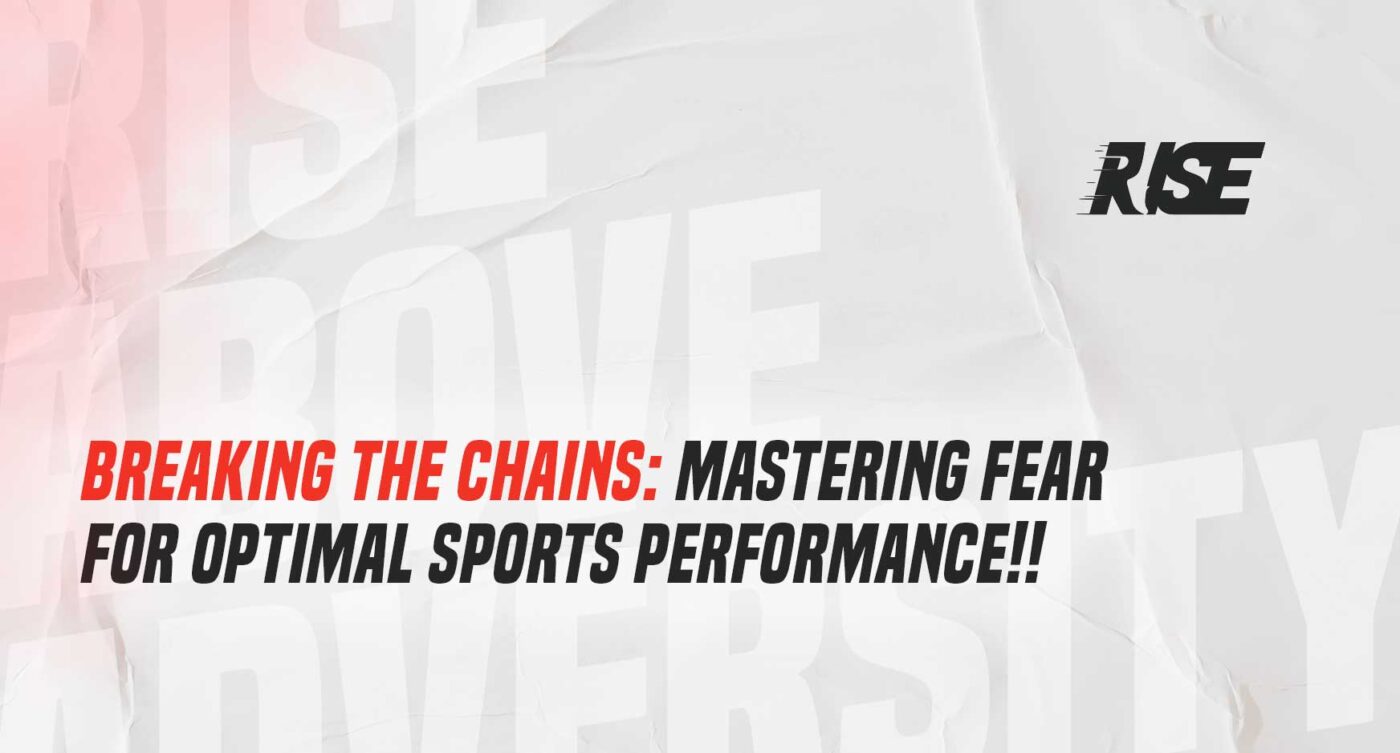“To reach your greatest potential, you’ll have to navigate your greatest fear.” – Henry Ogbujah
It is no secret, that there is a whole of time, effort, preparation and repetition that goes into an athlete’s skill set for them to perform at elite levels. Every rep is lodged into the central nervous system, muscle memory, and fast twitch muscle fibres to develop their skills to an unconsciously competent level (a.k.a autopilot).
Every time you put time effort and repetition into your craft, you ultimately raise the level of potential you are capable of achieving. Not only do you raise your ability to perform but you also raise your confidence in your ability to perform.
Neuroscientists can read brain activity to predict decisions up to 7 seconds before people act. That means that the unconscious mind which works off of habit programming has already decided on the actions to take in any given situation. That is why it is incredibly important to train your skills into autopilot habits and then trust your instincts in performance.
There is only one thing that can get in the way of you reaching peak performance every time you turn up to the sports arena and that is the conscious mind trying to control performance. More specifically – the amygdala (a.k.a. the emotional centre of our brain that attends to any type of physical or psychological threats among other duties). Its job is to keep us safe and when threatened it triggers a fear response activating the sympathetic nervous system and releasing stress hormones into the body.
Fear is simply defined as the sense of losing control. Anytime we feel out of control – we activate the fear response.
If you’ve ever felt the butterflies in the stomach, the sweaty palms, the heart racing at a million miles an hour, before, during or even after an event – first of all congratulations!! You are a human being. The state of anxiety and excitement to perform are very similar in feeling. Both are intended to release adrenalin, blood, and oxygen into the muscles to prepare to fight or flee a situation. While excitement can be helpful in performance, anxiety can spiral out of control if you don’t know how to manage it.
The entire fear response is an ancient instinct that has been part of the human race for generations upon generations. while most of us are no longer fighting (or running) for our lives in the wild, fear serves the same purpose today as it did when we might run into a lion while carrying water back from the river in the caveman era.
Fear promotes survival. It is the alarm bells that kick in when deciding to take the shortcut down the deserted alley at night, or the choice to refrain from touching the boiling pot on the stove.
Not only does our fear response keep us from physical danger but from psychological danger as well. This becomes even more magnified in the world of sports.
Many athletes have experienced some sort of fear in navigating the elite pathways of their sport. Even the greatest athletes of all time aren’t immune to dealing with fear. Fear can come in many shapes and sizes. Below are some of the situations athletes experience fear:
- Fear of failure: is a continuous supply of stress or anxiety that creates self-doubt in ability and performance. This is triggered by an athlete’s perception of the importance of performance and is focused on avoiding poor results or a less-than-perfect performance. Much of the worry comes from elements of performance that are not under their direct or immediate control which in turn triggers the fear response.
- Fear of losing: At elite levels, every athlete that competes does so to win. Unfortunately with the amount of variables that come into competition, winning isn’t always a given. Fear of losing can leave many athletes feeling like they are not good enough.
- Fear of embarrassment or shame: Many athletes place such high expectations on themselves that when reality doesn’t meet those expectations they spiral into negative thoughts that activate the fear response. Embarrassment is an emotion that is triggered by a thought. This can result in overthinking and hesitancy in performance to avoid feeling embarrassed.
“Fear killed more dreams than failure ever did.” – Suzy Kassem
- Fear of letting people down: Fear of letting others down is related to what you perceive others think of you and how they might change their opinion of you if you fail. This is known as ‘social approval’ and is all too common – especially in junior athletes that are still navigating their way and searching for their place in this world.
- Fear of not meeting the expectations: Unfortunately while navigating the elite pathways of your sports you will come across the coach, teammate or parent that has their own expectations on how you will perform. At professional levels, the fans will bear their expectations of you. In extreme cases, the expectations of others can result in hate, criticism and even confrontation. This anticipation can trigger the fear response within impacting focus during performance.
- Fear of the work not “paying off”: Athletes put so much time, work, commitment and dedication into their craft, that the idea of falling short of their goals can feel incredibly sickening. This is a fear in itself. We all want a guarantee that we will achieve the highest of goals we set for ourselves if we put in the work – but life doesn’t always work out that way.
- Fear of not performing perfectly: This fear comes back to the expectations we place on ourselves. Athletes set an expectation of performance that doesn’t include errors. But with so many variables that are out of their control in any given sports performance, mistakes and errors are bound to occur. This adversity creates a feeling of losing control in the mind provoking a fear response.
Because fear is a response of survival to both physical and psychological danger, we can never actually eliminate this mechanism within. However, we can manage the fear response to get the best out of ourselves and our performance.
“Courage doesn’t mean you don’t get afraid. Courage means you don’t let fear stop you.” – Bethany Hamilton
Here are 3 ways in which you can manage fear in performance:
- Acceptance
The response of our fear mechanism is to fight or flee any threat of physical or psychological danger. When the Amygdala sends the warning signs to the central nervous system it creates the feeling of discomfort within our body. For an athlete who is going into a competition they hold of high importance, this can identify as a feeling of nauseousness or butterflies in the stomach, an elevated heart rate and sweats.
But When we simply acknowledge that the fear is there, we remove the internal battle against the fear response. When we remove the internal response we send a message to the brain that the danger has passed. It’s ok to feel fear and take action anyway.
- Control the Controllable
The definition of fear is the feeling of losing control. For an athlete, it is essential to know what elements of performance are directly under your immediate control. You cannot control others – referees, teammates, coaches, competitors or spectators. Nor can you control the environment – the course or the venue, the weather, traffic on the way to competition, a pandemic, or postponed events. You have limited control over results – making or missing a shot, wins and losses, injuries.
But what you do have full control over is yourself – your thoughts, feelings, perceptions, behaviours and decisions. Anything outside yourself, you have limited to no control over so it’s only fitting that to feel in control of performance, your focus should be on your strengths, your preparation, your effort and your attitude.
- A.O.B.
Awareness of Breath otherwise known as conscious breathing plays a vital role in optimizing an athletes’ performance. Not only does it help with maximizing the use of each muscle. But it can help save much-needed energy, remain calm and relaxed, and build the focus to create a strong level of resilience to perform the proper action in the right moment.
It is impossible to be present and fearful at the same time. When you make a conscious effort to feel your breath, hear your breath, and see your lungs expanding as you breathe – you bring yourself back into the present moment.
Fear is the known event of something that hasn’t even happened yet. It can create negative mental imagery at a conscious or subconscious level that triggers the emotions in our body making the fear seem so real.
One of the physiological reactions to fear in the body is the elevated heart rate. When we can consciously slow down our breathing, we, in turn, slow down our heart rate. This signifies to the brain that the imminent danger has passed and allows us to perform the present moment – where all peak performance is played out.
Fear can be excruciatingly crippling to an athlete’s ability and comes up more often than not in close competition. As our minds battle to take control of the situation we find ourselves performing from conscious thought rather than the hours upon hours of training we have lodged into our central nervous system and muscle memory. 90% of what you fear to happen – doesn’t happen and perceives itself as False Evidence Appearing Real.
“There is no illusion greater than fear.” – Lao Tzu
– 𝒞ℴ𝒶𝒸𝒽 𝒞𝒶𝓁.

